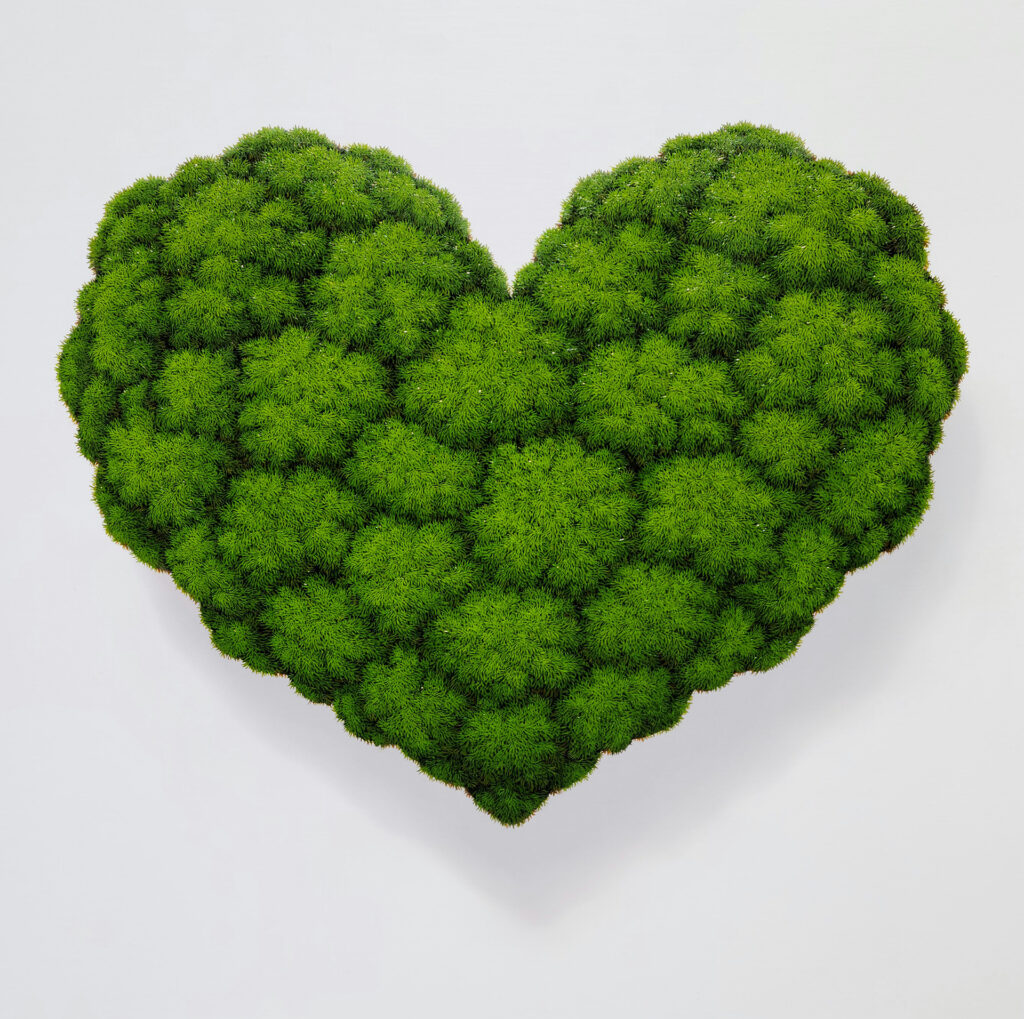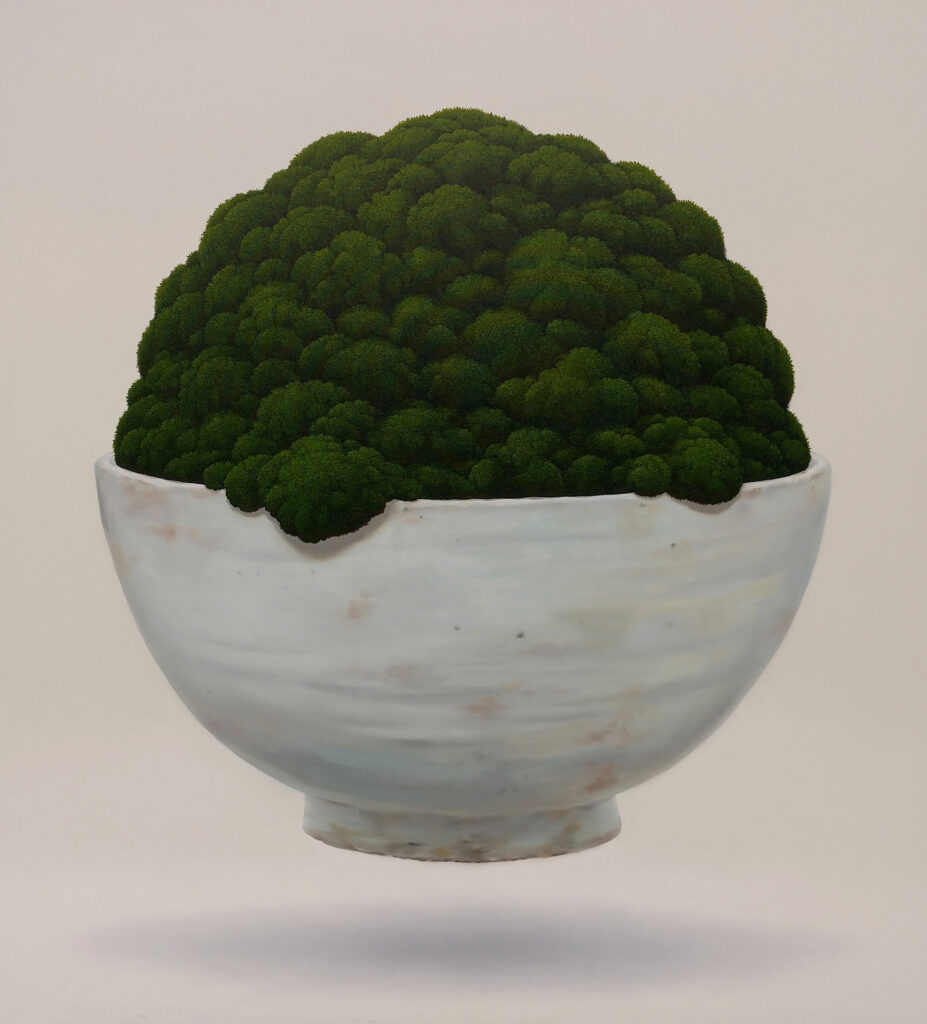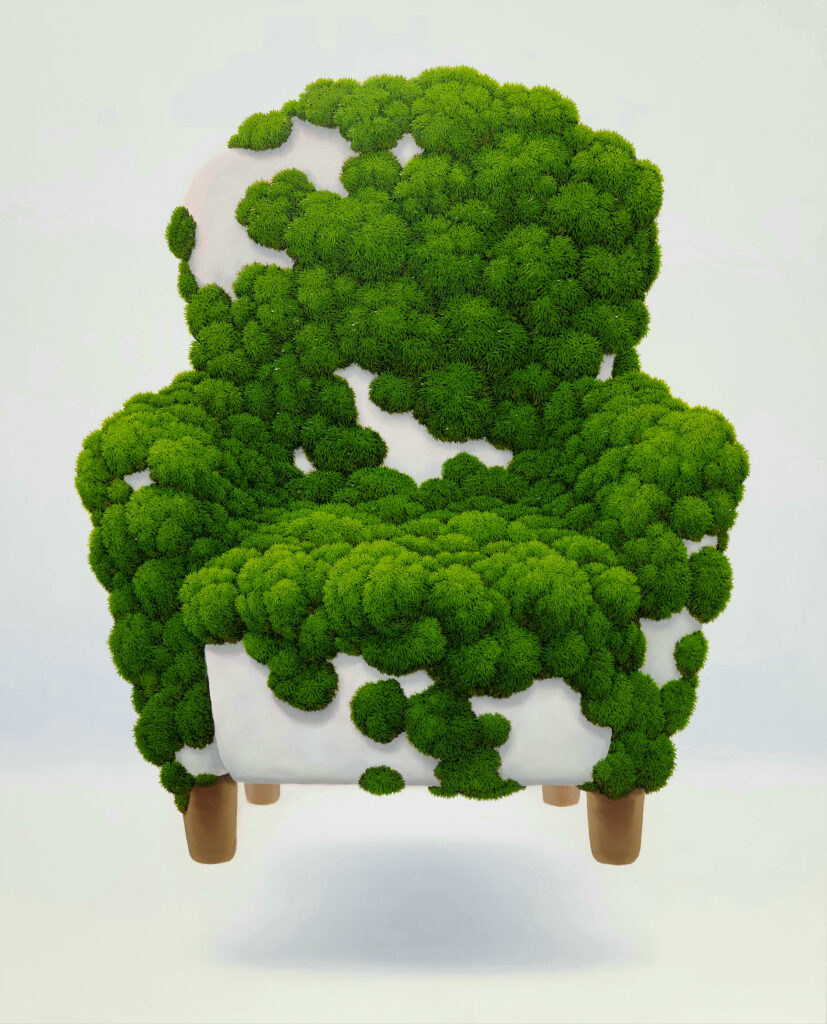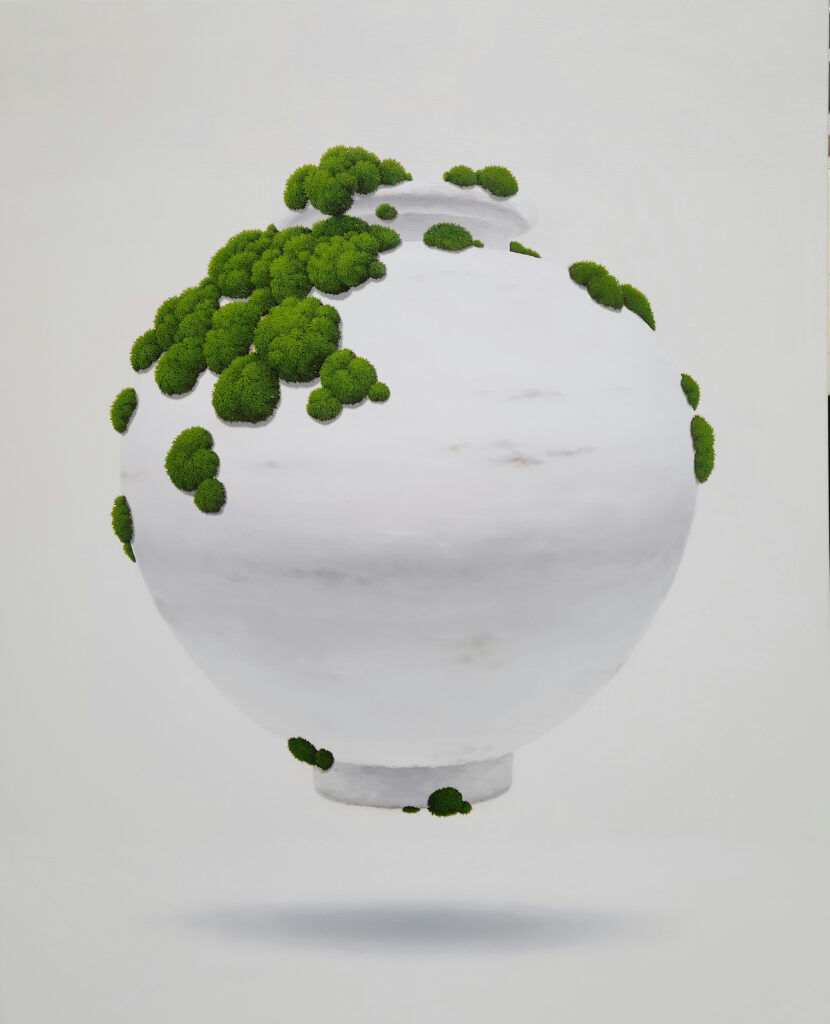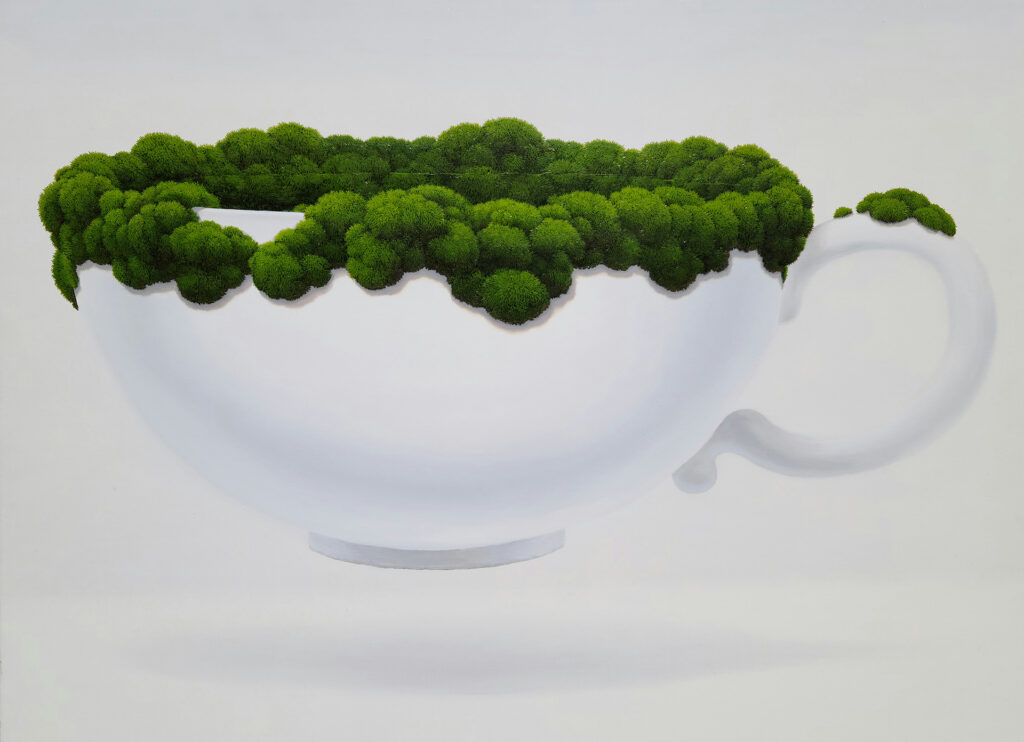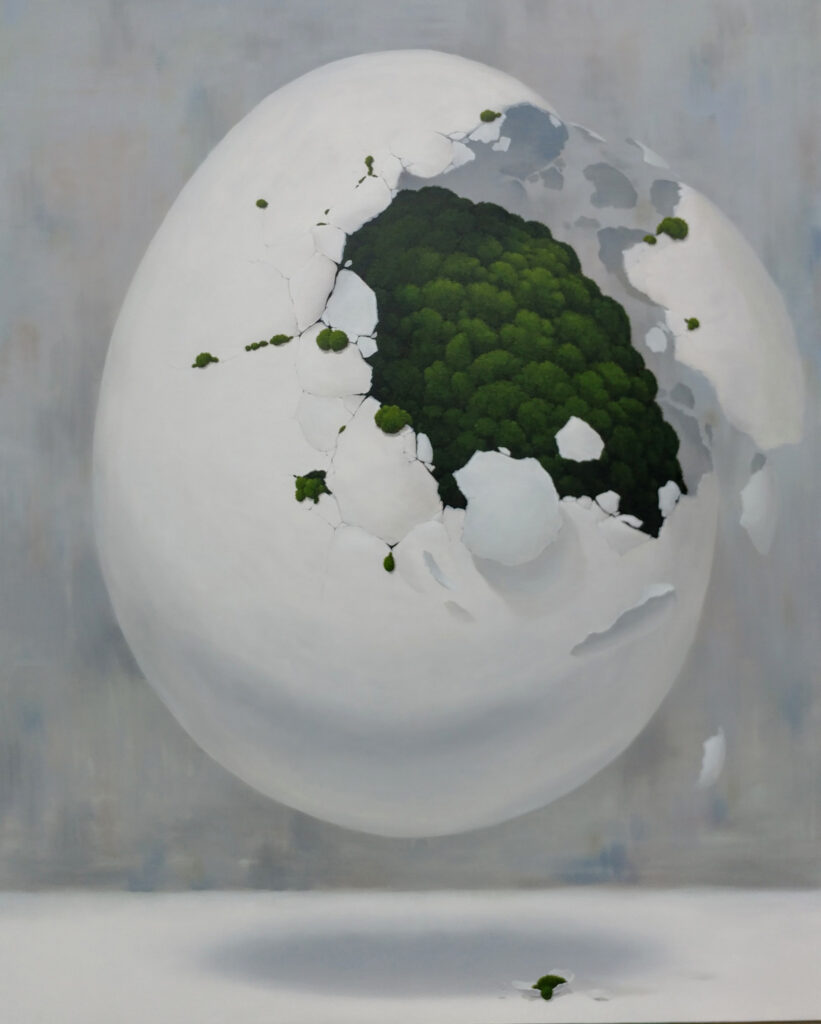A Natural Life, A Harmonious Life
Jong Yong Yang
Jong Yong Yang paints moss, the primordial, densely growing bryophyte that is one of the oldest plants in Earth’s history. For 400 million years, moss has gradually reduced and simplified in order to adapt to dry environments, evolving into its current sporic form which reproduces and survives with very little moisture. In Yang’s paintings, moss clings to the surface of bowls and other everyday objects. The hyper-realistic depictions of moss reveal the artist’s interest in inconspicuous entities that seem to be trivial or insignificant.
Yang’s Bowl_Moss series shows moss-covered bowls floating against an abstract white background, resembling the sky or space. If the bowl elicits thoughts of the Earth floating in empty space, then the moss naturally represents the numerous life forms on the planet. The moss sometimes spreads downwards over the edge of the bowls, showing its unstoppable vitality and volition against the sleek porcelain surface.
Unlike comparable images that show ceramic vessels or other objects floating in the air, works like Moss (DongDongDongDongDong) portray moss as the fundamental existence that defies gravity. In other words, the tiny infinitesimal beings are what keep the world going to this day.
In other paintings, moss multiplies to engulf everyday objects (e.g., a sofa, toilet, jar, coffee cup), or unexpectedly transforms into different things (e.g., tree, egg, rice). Through such works, viewers come to see moss as a symbol, rather than a real object. The potent presence of the moss is further emphasized by its high density, dark green organic texture, and expansive volume. In Heart_Moss, the moss forms the shape of a heart, as if several colonies have united their efforts to convey a message of love to us. Hence, the work can be read simultaneously as a sign, a painting, and a mini narrative. In order to create meaning, living beings must form signs through their relationships. In the paintings that are hung side by side, the objects are shown as if the viewer is looking down on them, evoking the perspective of a god.
A similar perspective characterizes the Moss (1, 2) series, which shows lumps of moss scattered against a white floor. But judging by the shadows, these lumps of moss are also floating in the air. What would moss look like from so high above? Despite their individual insignificance, these small beings hold tightly to one another to form a stronger network, realizing their transcendental capacity to resist gravity. Thus, the shadows not only hint at the point of view of god, but also provide a subtle clue as to the divine achievements of the moss. Perhaps the most interesting point of Jong Yong Yang’s narrative is how the moss delicately reveals the artist’s worldview, and I look forward to seeing how this narrative will continue to evolve, like moss, in the future.
Moss does not grow tall. Instead, it spreads widely, growing to resemble a small forest. As it grows, it covers every being in its path, as if embracing them and connecting them in a new relationship. Thus, moss lives by making its space more harmonious and suitable to life, which is to say that it lives naturally.
from the artist’s notes





